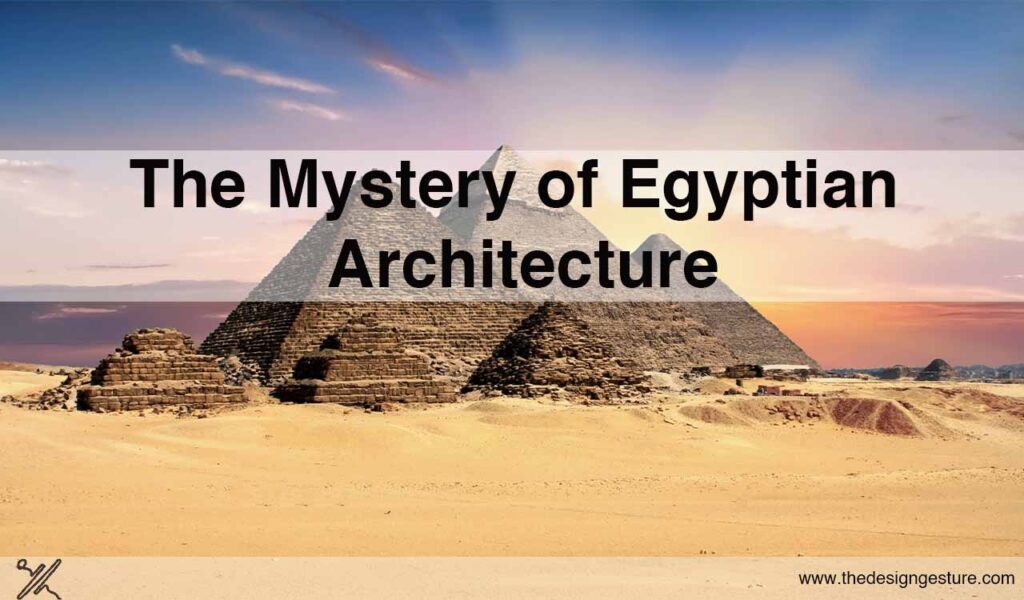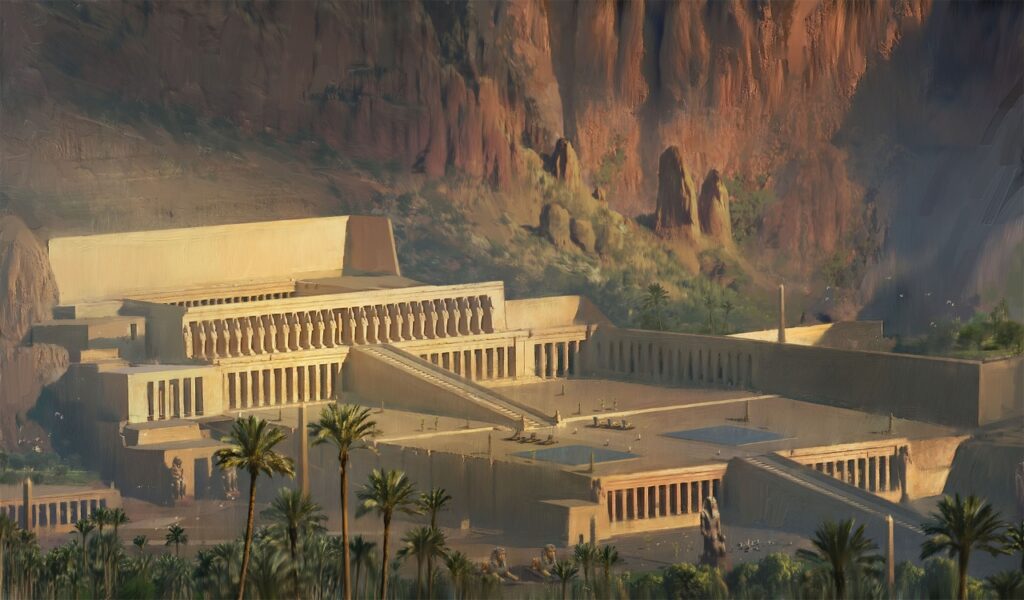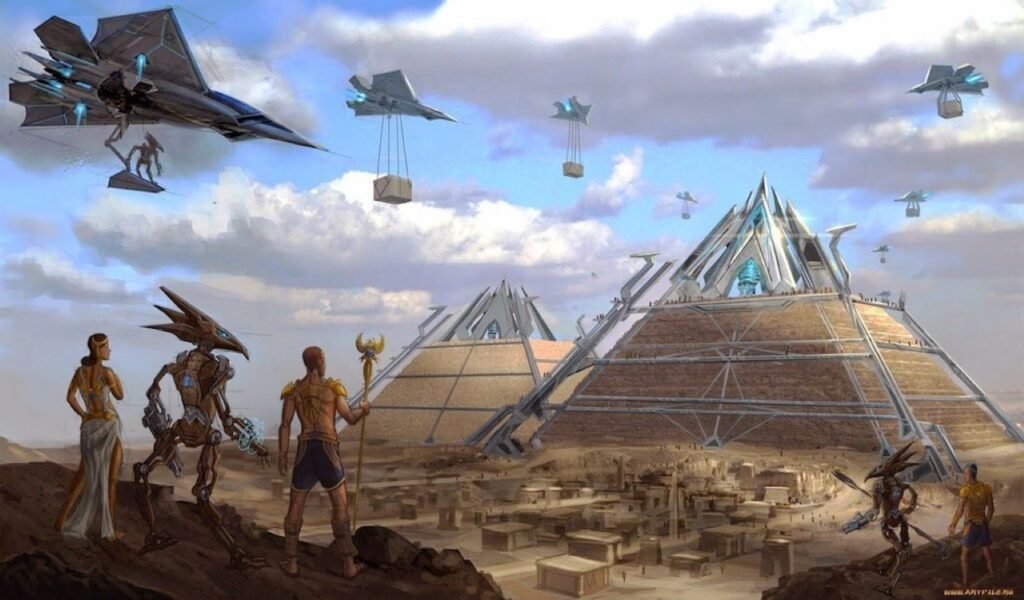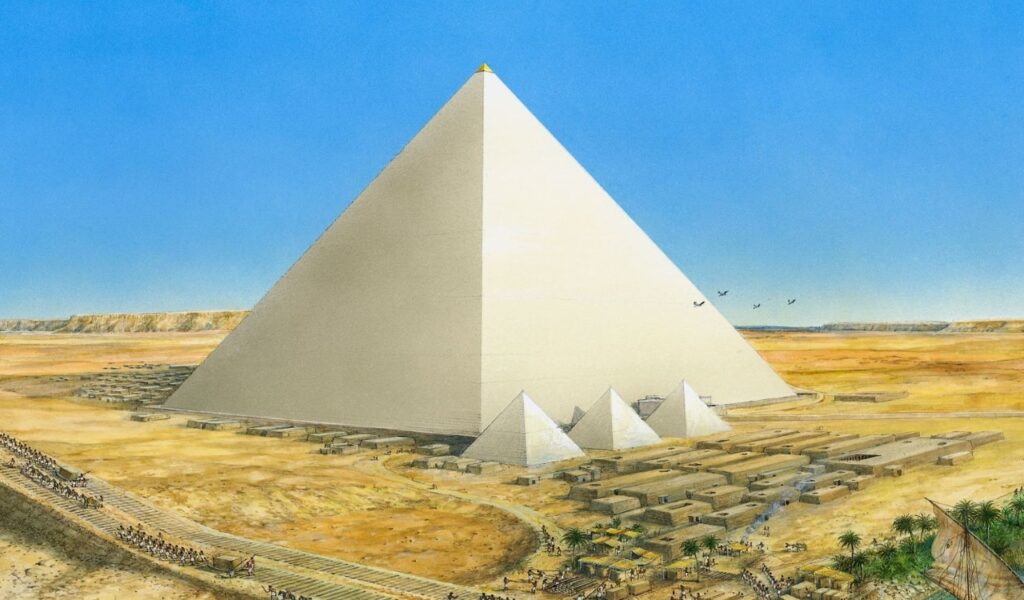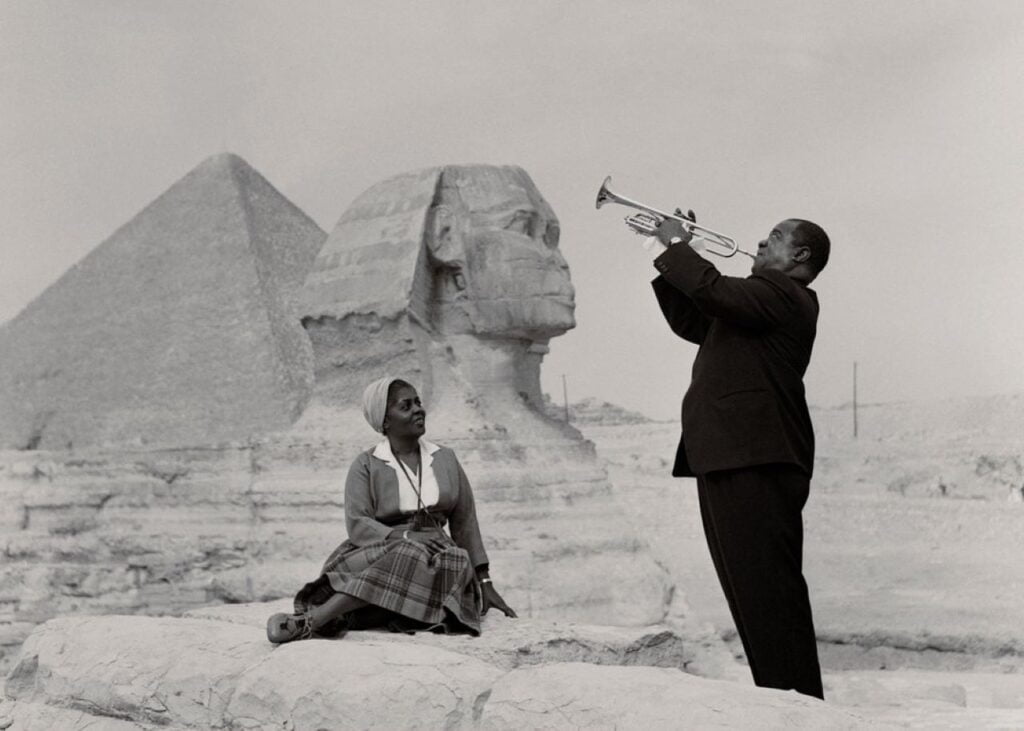Table of Contents
Introduction

Ancient Egypt was a civilization of ancient Africa, concentrated along the lower reaches of the Nile River, situated in the place that is now the country Egypt. Ancient Egyptian civilization followed prehistoric Egypt and coalesced around 3100 BC with the political unification of Upper and Lower Egypt under Menes.
Ancient Egypt was controlled by many dynasties and kingdoms. Historians have divided this into three kingdoms to define them efficiently while describing the period between each of them. This gives us a framework in which to understand the historical wealth of Egypt. Ancient Egypt has a long history, evidenced by the presence of many enduring pieces of architecture.
Construction miracles of ancient Egypt

The best-known example of ancient Egyptian architecture is the Egyptian pyramids while excavated temples, palaces, tombs, and fortresses have also been studied. Most buildings were built of locally available mud brick and limestone by levied workers. Monumental buildings were built via the post and lintel method of construction. Many buildings were aligned astronomically. Columns were typically adorned with capitals decorated to resemble plants important to Egyptian civilization, such as the papyrus plant.
All pyramids aren’t created equal. Just as with many building types, there are distinct phases to pyramid construction. The earliest pyramids aren’t the pointed structures we most commonly think of but were flat.

Many examples are found in the vast Saqqara burial ground located in what was Ancient Egypt’s capital, Memphis. The pyramids here are the earliest known and include the Pyramid of Djoser. Built during the third dynasty and designed by architect Imhotep, it was constructed between 2630 BCE and 2611 BCE. It’s considered one of the world’s oldest monuments made of cut masonry and is not pointed. A step pyramid where Imhotep had mastabas (Egyptian tombs) of diminishing size stacked on top of one another. This typology is found in many cultures from the Borobudur Temple in Indonesia to the El Castillo pyramid built by the Maya in Chichen Itza.
The setting sun came to symbolize death and the sun “died” in the west each night. The souls of the pharaohs were meant to connect with the setting sun before rising again in the morning, a symbol of eternal life. By placing pyramids to the west of the Nile, they lived right in the area that metaphorically signified death
Egypt’s Charm: The Great Pyramid of Giza
the Great Pyramid of Giza is the largest of all the surviving pyramids in Egypt. Constructed from 2580 to 2560 BC (fourth dynasty), the pyramid has no documented evidence of its construction, but many theories could throw light on its history. Archaeologists believe that the pyramid was built over a tomb dedicated to a pharaoh of the fourth dynasty named Khufu and his family. The materials used for the construction of the pyramid were granite and limestone. Initially, it was 146.7 meters tall but with weather conditions and erosion, it has now been reduced to 138.8 meters and stretches 230 meters in length.
The pyramid has three chambers, the King’s Room, the Queen’s Room, and a large passageway known as the Great Gallery. Around the pyramid, three smaller pyramids are believed to have been built for Khufu’s wife. The great pyramid has been built from heavy stone blocks that are stacked repetitively up to its head. It was built by the royal architect Hemiunu and skilled workers were used in its construction instead of slaves.
The Great Sphinx of Giza

The Great Sphinx of Giza is a statue of the mythical creature known as the sphinx. In Egyptian mythology, the sphinx was a creature with the body of a lion and the head of a human. Archaeologists believe that it was created around 2500 BC and represents the pharaoh Khafre of the fourth dynasty’s the Old Kingdom.
The Great Sphinx is a monolith that was modeled in the shape of a lion at the back from various layers extending to its tail and with a human face believed to be that of Pharaoh Khafre. It is a gigantic structure that is 240 feet (73 meters) long, 65 feet (20 meters) high, and six meters wide. The facial features of the structure alone are each three feet (1 meter) tall and are carved out of bedrock. The mythical sphinx has great prominence in the history of Egypt and is believed to be the source of the food cycle making it one of the most ancient and revered structures in Egyptian history.
Valley of the Kings
The Valley of the Kings or the Valley of the Gates of the Kings is a valley that is believed to be the burial place of the great pharaohs. At first, the pyramids were only used as tombs for the kings but around 1500 BC the practice was changed to the burial of prominent royal figures as well. Archaeologists have found 63 tombs and over 120 chambers ranging in size depending on the prominence of the person buried there.
The walls of the underground tombs are decorated with graffiti in various languages and hieroglyphs that depict ancient Egyptian culture. The most remarkable mausoleum which was excavated here was that of King Tutankhamun. The tomb preserved the mummy of King Tut and other precious artifacts made up of gold and various other materials. The Valley of the Kings has a special place in the history of Egypt due to its great archaeological wealth.
Uncovering the mysteries of the pyramids
One of the biggest mysteries about the Egyptian pyramids is the construction techniques used to erect them. The incredible feat of the Egyptians is more impressive when taking into consideration that over 2 million limestone and granite blocks were used to build the Great Pyramid of Giza. Each piece of the masonry weighed about 2.5 tons (2.3 metric tons).
The origins and composition of the Great Pyramid, our oldest wonder of the world (and its slightly fewer famous kin), have long confounded scholars. How did engineers manage to achieve the seemingly impossible feats that building these masterpieces would require? While some believe that construction workers may have used large ramps to transport the stones, this theory has been largely disproven, as there is little archaeological evidence to support the claim.
Slaves
A wall painting dating back to 1900 BCE depicts a procession of men pulling a large statue on a sled as one person stands at the front pouring water over-sand. Though it was originally thought that the gesture was purely ceremonial, there is scientific evidence that this painting holds the key to unlocking the mystery of how they moved all that weight.
Researchers experimented with pulling large amounts of weight on a sled across the sand and found that when they added the right amount of water, the job was significantly easier. The dampness of the sand greatly reduced friction by up to as much as 50%, making it much more feasible to haul large amounts of weight.
Aliens
The alien theory has persisted to the present day. In 2001, Russian scientist Dr. Viktor Ivanovich claimed that the KGB had found ancient alien remains inside the Great Pyramid. This idea has also appeared in many forms in pop culture, with shows like X-Files promoting the idea that architects and historians have been hiding evidence of alien activity for hundreds of years. Certainly, the Great Pyramid’s inner network of shafts, passageways, and chambers is so intricate that it’s not hard to understand why people believed that divinity or super-intelligence was involved.
The Great Pyramid weighs 5,750,000 tons. Also, the stones indicate high precision that is only possible to be cut by laser cutting machines. This includes all the time needed to perfectly cut the rocks, have them transported miles across the desert, haul them up the ramp of the pyramid, and then lay them perfectly in place. It’s very hard to believe that primitive human beings did all of this. Therefore, it is more logical for some researchers to believe that they were built either by aliens that could handle such a gigantic structure.
Ancient tools in Egyptian Architecture
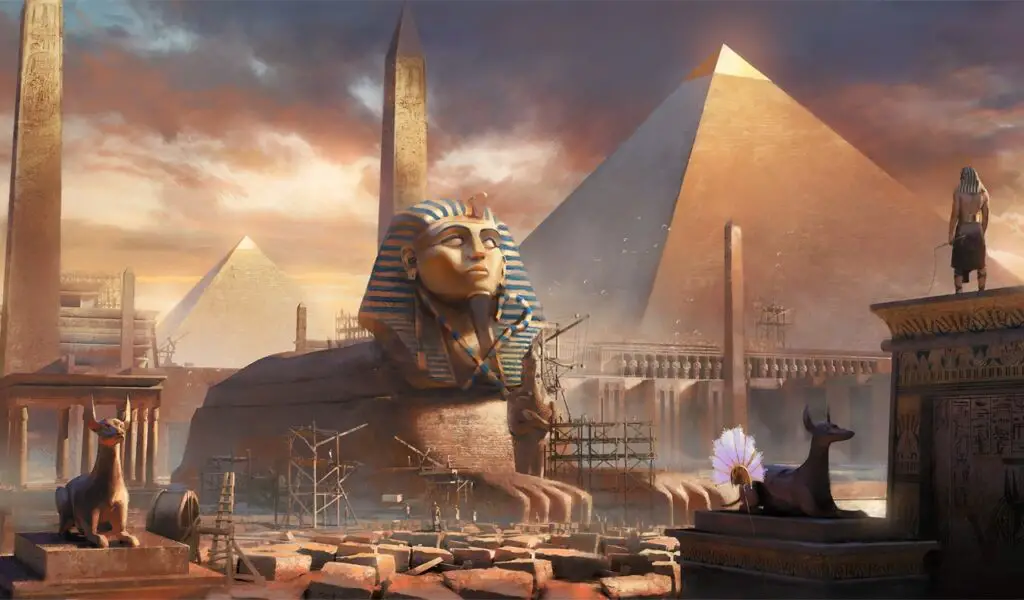
The ancient Egyptians have provided us with some of the most important technologies humans have created. They developed modern writing technologies, including ink made of a brew of gum, soot, and beeswax; and they used the ink to write on the first paper on record, papyrus, which is crafted from the pith of the Cyperus papyrus plant. Putting their paper and ink to good use, they developed an intricate lettering system that used some 1,000 characters.
The hieroglyphs survived and eventually evolved into the Phoenician alphabet, the oldest alphabetical lettering system on record. They also made strides in agriculture, inventing highly advanced cutting tools, and pioneering the first iterations of technologies like the ox-drawn plow and the sickle around 4,000 BCE. the ancient Egyptians set the stage for the hyper-advanced civilization we live in now, where we measure the grandeur of civilizations by their tallest buildings and their rapid technological growth.
Zigzagging Ramp
The flat ramp theory is not here because such a ramp would have had to be bigger than the pyramid itself. Though a zigzagging ramp would require less material than a straight ramp, it is nearly as implausible because it would have required constant adjustment as the pyramid structure was built higher and higher. Read more
Spiral Ramp
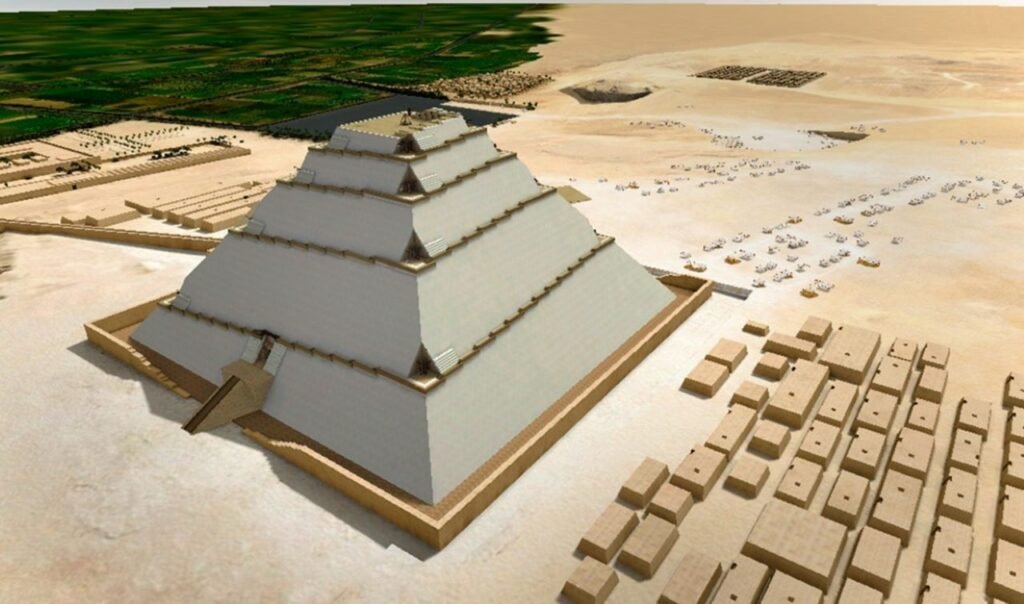
A spiralling ramp has until now been the most plausible theories and may have been used to prevent the problems associated with a single long ramp. This would have taken up less space and allowed workers to move up the face of the pyramid with ease. The remains of a small ram in Giza support this theory. According to the recent research, archaeologists took samples from various pyramids and found differences in the density which was very similar to wood that might have been left there during the construction. Read more.
Water shaft theory
This theory suggests that a water causeway was used to transport the stones and that the stones were cut and shaped in the water. the WST outlines that special canals were constructed all the way to the build sites, allowing the stones to float all the way there. Floats were supposedly made of cedarwood or inflated animal skins wrapped in papyrus, and when attached to the stones would allow them to be pulled from the shore. Know more.
Is the mystery of Egyptian architecture solved?
The Ancient Egyptians’ celebration of their culture and monarchs can easily be seen in these grand edifices. The number of structures dedicated to pharaohs and their mausoleums depicts their firm belief in the afterlife, and these ethereal and unconventional pieces of architecture embody the beauty and mystery of the Ancient Egyptian civilization.
The truth is that nobody knows for sure. Egyptology is a highly active field, with researchers moving away from reading inscriptions, but continuing to excavate and use technology to answer the many mysteries still left to be revealed. It took an insane amount of intelligence and human resources and we’re so fortunate to have them still standing after all these years.
Despite our desire to understand the ancient Egyptian civilization, there is a mystery at the heart of their mastery of architecture and engineering–a mystery with an answer that lies buried along with the pharaohs. Their incredible technological acuity shows that the ancients knew something we have since forgotten.
Today, Egyptian archaeologists are still making important discoveries, and the scientific study of royal mummies is shedding new light on the genealogy of the pharaohs. The ongoing deciphering of hieroglyphic writings and research on the life of the peasants are also answering many questions related to the evolution of Egyptian culture. The pharaonic religion gives the impression that the Egyptians were preoccupied with death; however, there are ample indications that they were a happy lot who knew how to enjoy life.

